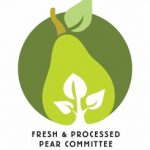by Tianna DuPont, WSU Extension; Lee Kalcsits, WSU Horticulture; Troy Peters, WSU Extension July 2020
This article is under review and will have two additional case studies added in March 2021.
Hot summers and recent issues with cork spot in D’Anjou pears highlight the need for a better understanding of how irrigation timing and frequency, in conjunction with good calcium programs, can affect tree growth, productivity, and fruit quality in pears. As part of a larger project which includes research into optimum irrigation timing and quantity for pears we have identified several common challenges to irrigation in pears. Lack of sufficient irrigation; uneven pressure and distribution due to hills; irregular water distribution across the block due to old, inappropriate or malfunctioning equipment; sandy soils with low water holding capacity; heavy soils with limited drainage; insufficient or excess watering due to inability to time water applications; and/or system inefficiencies can all limit growers ability to achieve optimum irrigation. The following case studies highlight common problems and the results of irrigation upgrades designed to address these challenges.
CASE STUDY 1 Caudle ORCHARD
Improving Irrigation Efficiency
Hot summers and cork spot in D’Anjous can be a significant challenge in Central Washington. Cork spot is responsible for an estimated $7 to $8 million dollarsi in losses to Anjou production every year. In 2017, cork spot accounted for approximately 33% of Anjou culls. Irrigation frequency and timing, as well as good calcium programs can affect tree growth, productivity and fruit quality in pearsii. Fruit size is also critical for high returns.
SITE CHALLENGES
• Run-off
• Small fruit
• Inability to conduct tractor work when sloping field stays wet.
• Lack of uniformity, variable weak trees
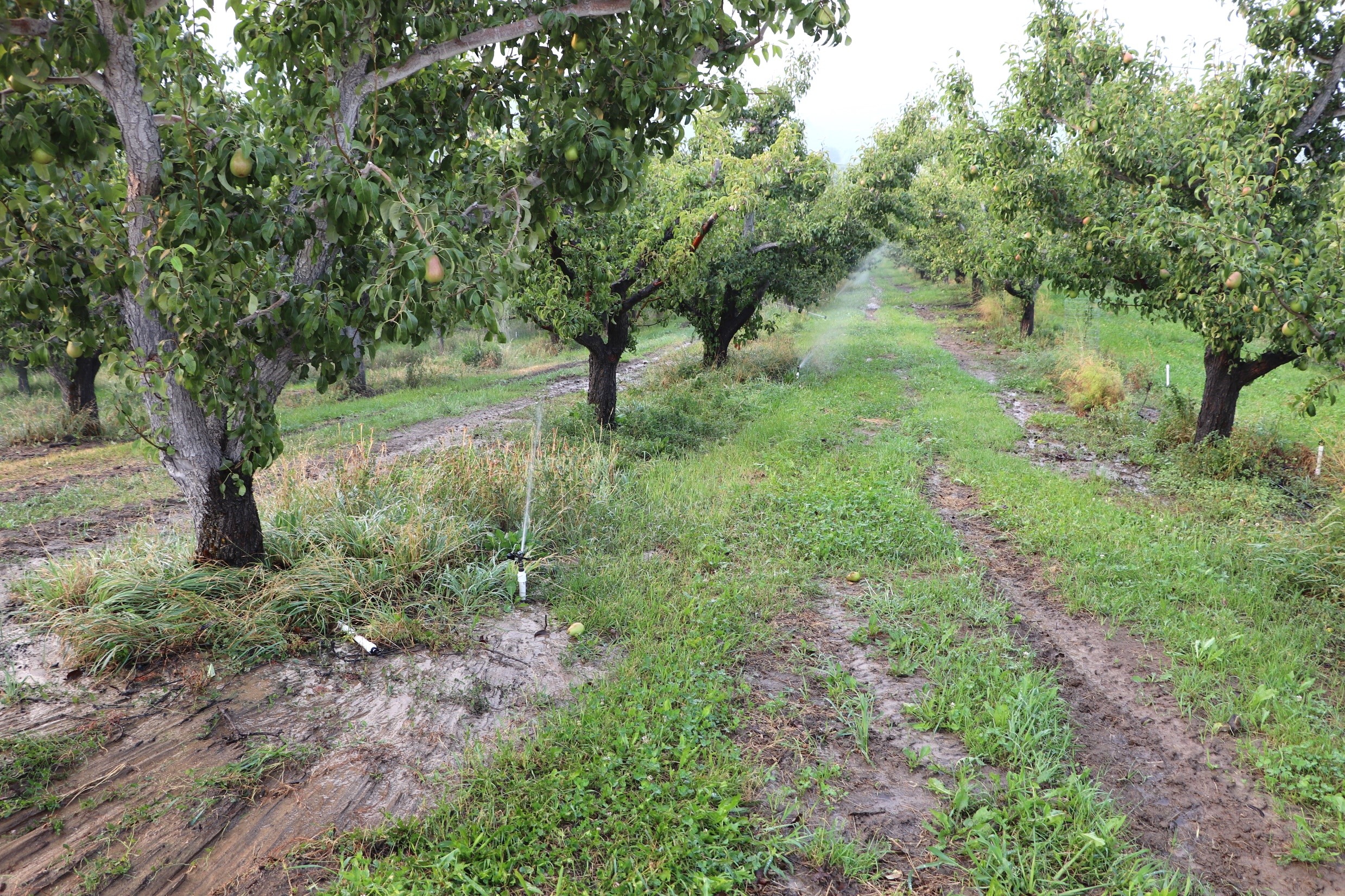
STANDARD SYSTEM
Impact sprinklers (Rainbird) on 36 foot by 36 foot spacing. Growers generally run 1 row at a time skipping a row as they go across the field and return taking 9 days to irrigate the five-acre field.

NEW SYSTEM
R10 micro sprinklers were installed every row on a 20 by 20 foot spacing in a five-acre field encompassing one half of the sloped field in spring 2018.

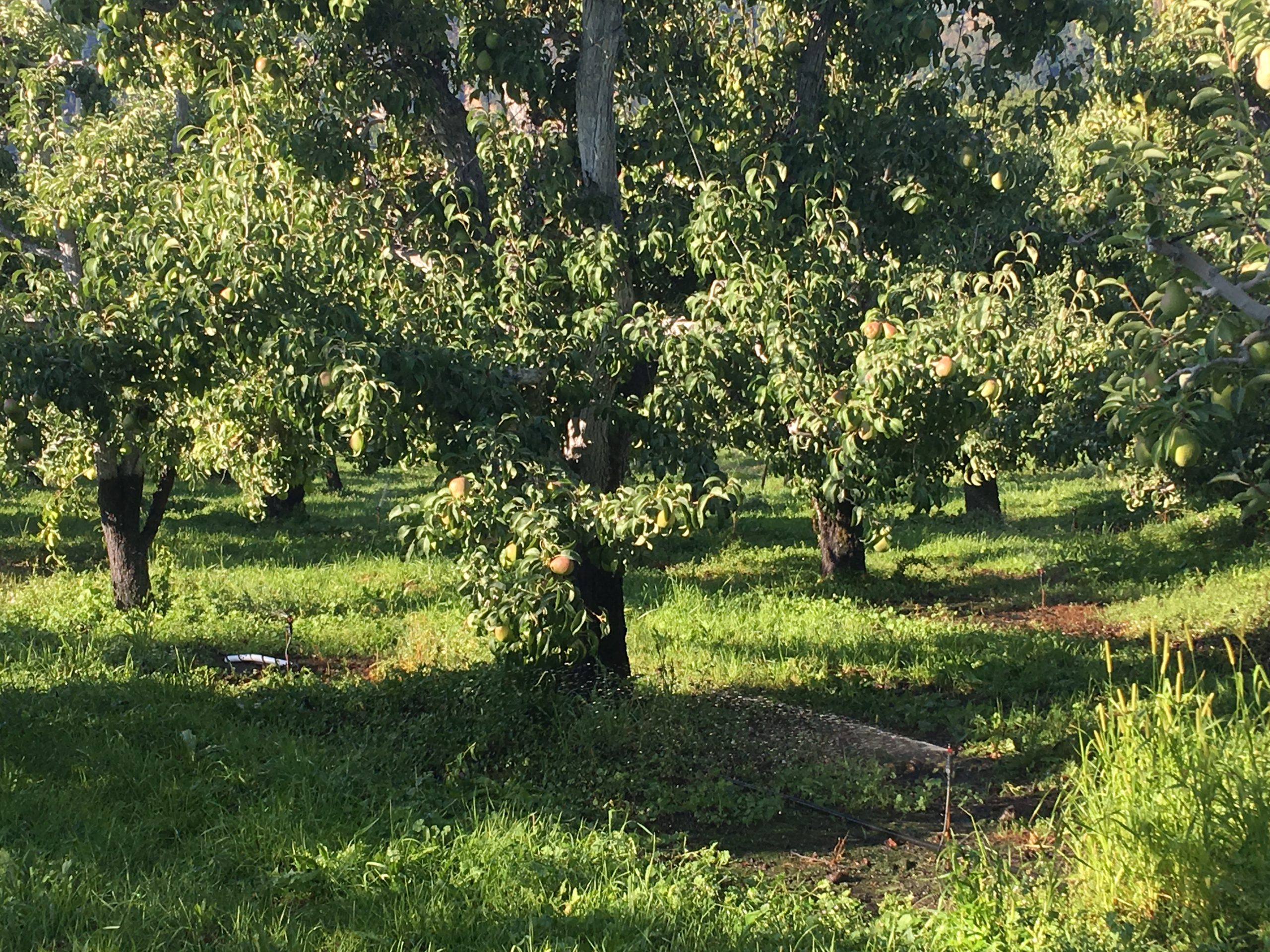
GROWER OBSERVATIONS
“Zero run off in the new system.”
“Leaf color was more uniform.”
“Before the quickest we could water was 9 days. Now if we want to we can water the whole block in 2 days (20 lines at a time).” = more flexibility “If we need to push water it is a lot easier.”
“Good to have less water more often.”
IMPACT ON WATER USE
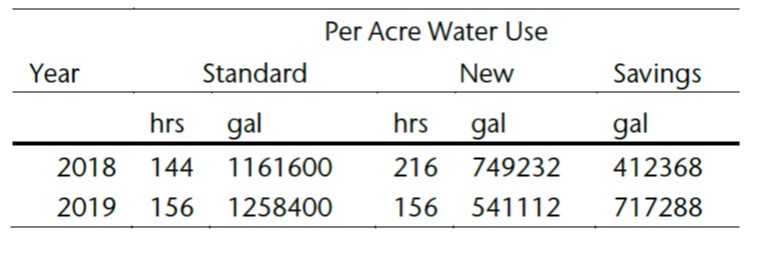
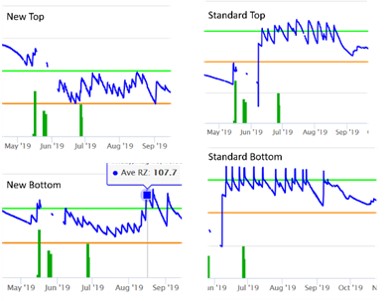
Soil moisture record from 2019. The soil in the standard system tended to stay too wet.
IMPACT ON TREE STRESS
Tree water limitation is measured by using a pressure chamber to measure leaf water potential. Water within the plants moves through a network of cells (xylem) that act like pipes carrying water from the roots. When the soil dries and the roots cannot keep pace with evaporation from the leaves the water in the plant becomes under tension. Tension over 1.2 mpa is considered too high.
Water limitation measured by leaf water potential was lower in the upgraded block (0.79 to 1.13 mpa on July 17, 2018) compared to the standard block (0.81 to 1.7 mpa).
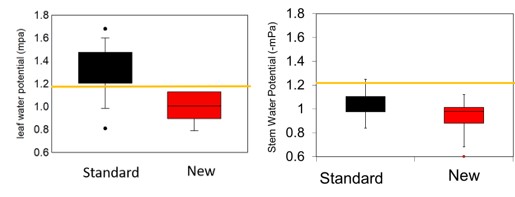
Tree water stress for 2018 (left) and 2019 (right).
IMPACT ON FRUIT SIZE
In 2018 and 2019 fruit size was more uniform in the upgraded block compared to the block irrigated using the standard system.
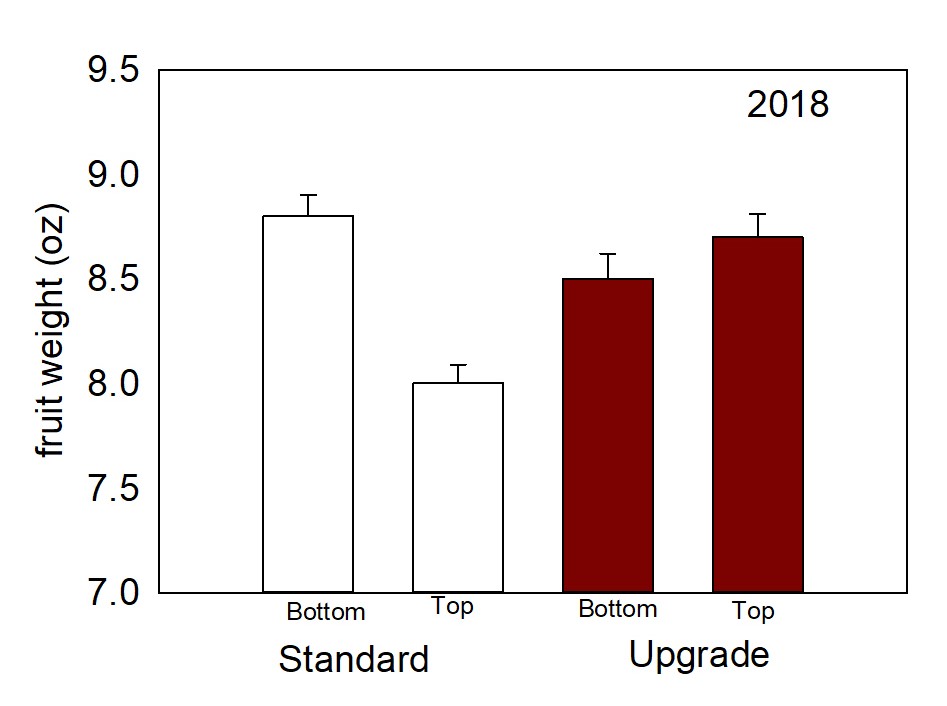
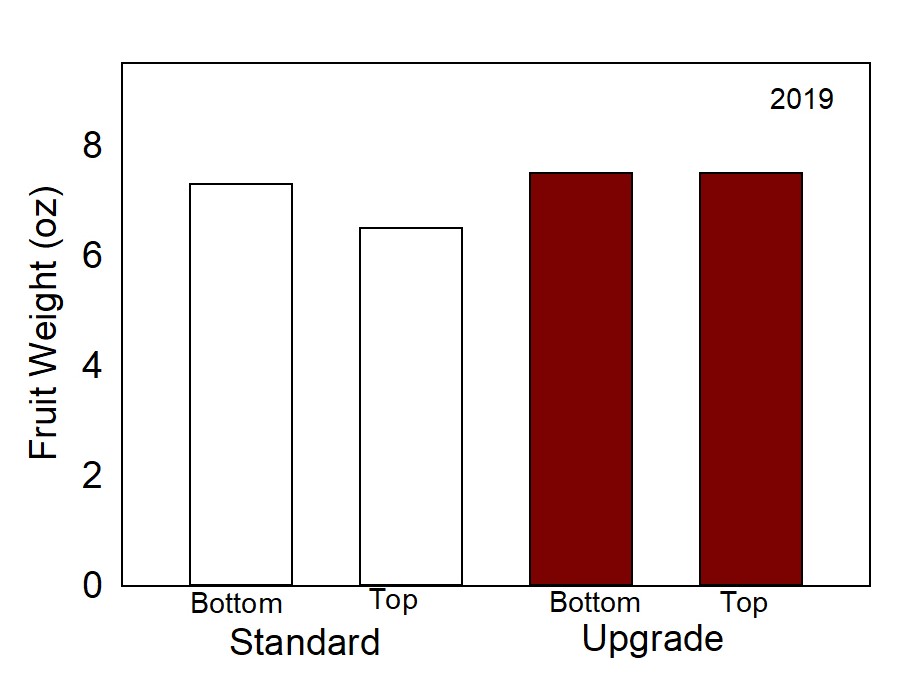
Fruit size in 2018 (top) and 2019 (bottom).
CASE STUDY 2 LONG ORCHARD
Improving Irrigation Efficiency
Hot summers and cork spot in D’Anjous can be a significant challenge in Central Washington. Cork spot is responsible for an estimated $7 to $8 million dollarsi in losses to Anjou production every year. In 2017, cork spot accounted for approximately 33% of Anjou culls. Irrigation frequency and timing, as well as good calcium programs can affect tree growth, productivity and fruit quality in pearsii. Improved irrigation systems can target water to the crops increasing water use efficiency.
SITE CHALLENGES
- Severe cork.
- Did not pick block in 2017 due to 80% cork.
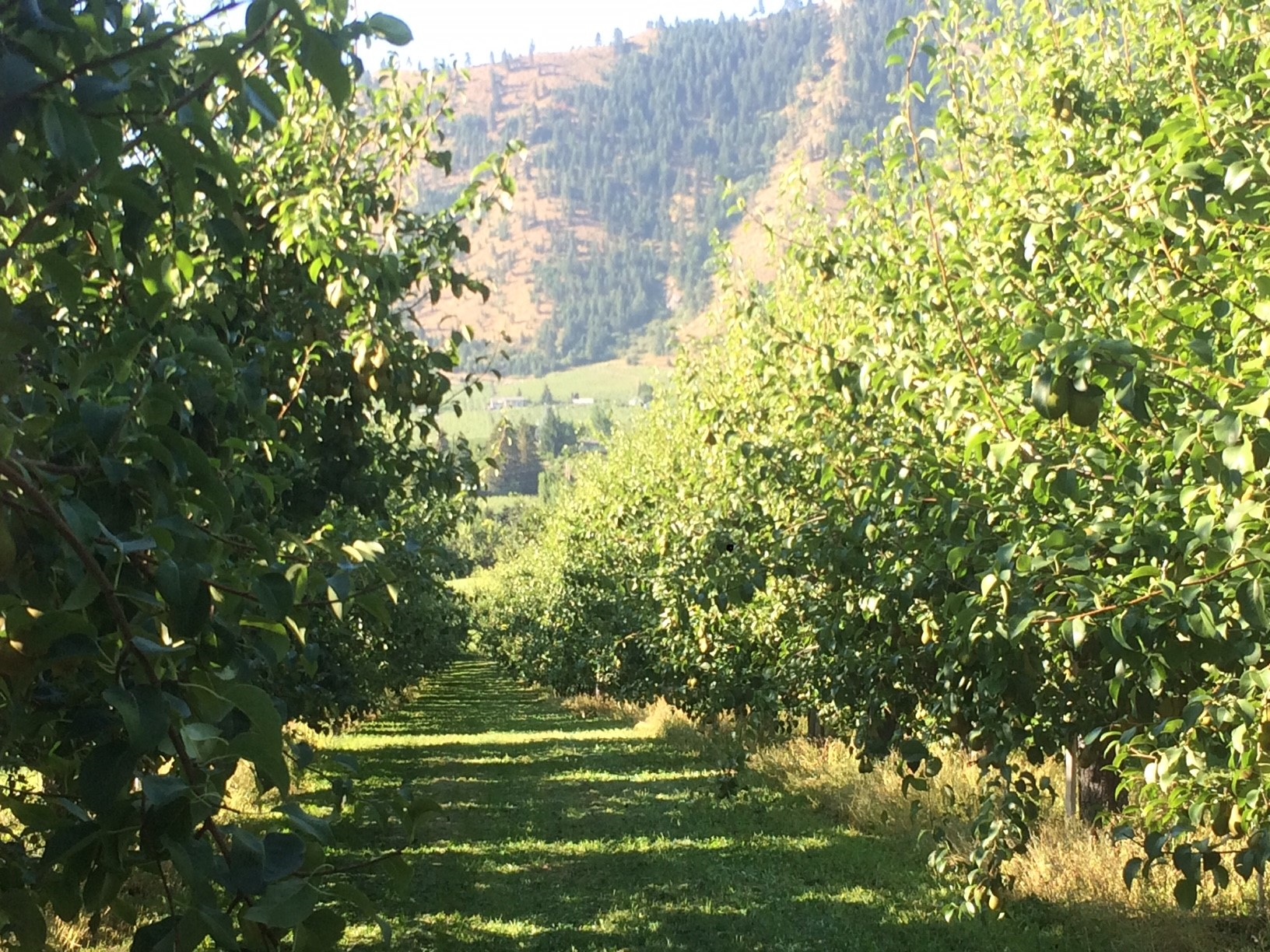
Figure 1. Project site Long Orchard Flowery Divide Rd Cashmere WA.

Figure 2. Cork is a challenge at this site.
STANDARD SYSTEM
Impact sprinklers (Rainbird and R2000) on 24 foot by 20 foot spacing. Grower generally runs irrigation weekly during the growing season using 12 to 24 hr sets.


Figure 3. Rainbird sprinklers (left) and R2000 sprinklers (right).
UPGRADE
Sentec soil moisture sensors were installed in April 2019. Irrigation in 2019 in the ‘upgrade’ block was done according to soil moisture needs rather than a standard schedule.
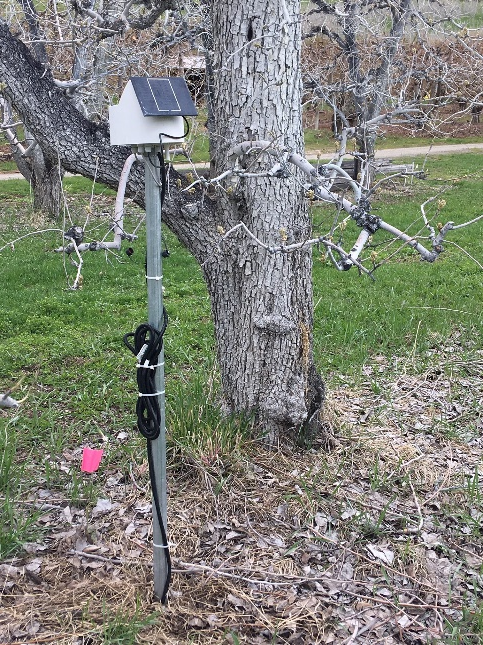
Figure 4. Sentec irrigation sensor installed April 2019.
IMPACT ON WATER USE



Figure 5. Soil moisture stayed above the full point (field capacity) for most of the season in the standard irrigated block compared to between refill and full in the block where Long irrigated according to soil moisture sensor readings.
IMPACT ON FRUIT QUALITY

Figure 6. Fruit quality information from commercial packout from 2019 fruit packed 12/31/2019.
iThis value was estimated using cull analysis and pack out data from packinghouses representing 33% of the pear industry
iiRaese et al. (1982).
Thank you to collaberators Larry and Renee Caudle, Brandon Long, Erica Bland, Aaron Hargrove, Bob Gix; Sandy Letzing, Cascadia Conservation District, Chet Walker, S&W Irrigation
Thank you to in-kind support from
Wilbur Ellis
ITC
Sentek
Thank you to funding from
Bonneville Environmental Foundation
Washington Fresh Pear Committee
Additional Information
Irrigation Sensors with Jac LeRoux – Improving Irrigation Efficiency in Pears Virtual Field Day
Cost Share Availability – Irrigation Efficiencies Virtual Field Day

